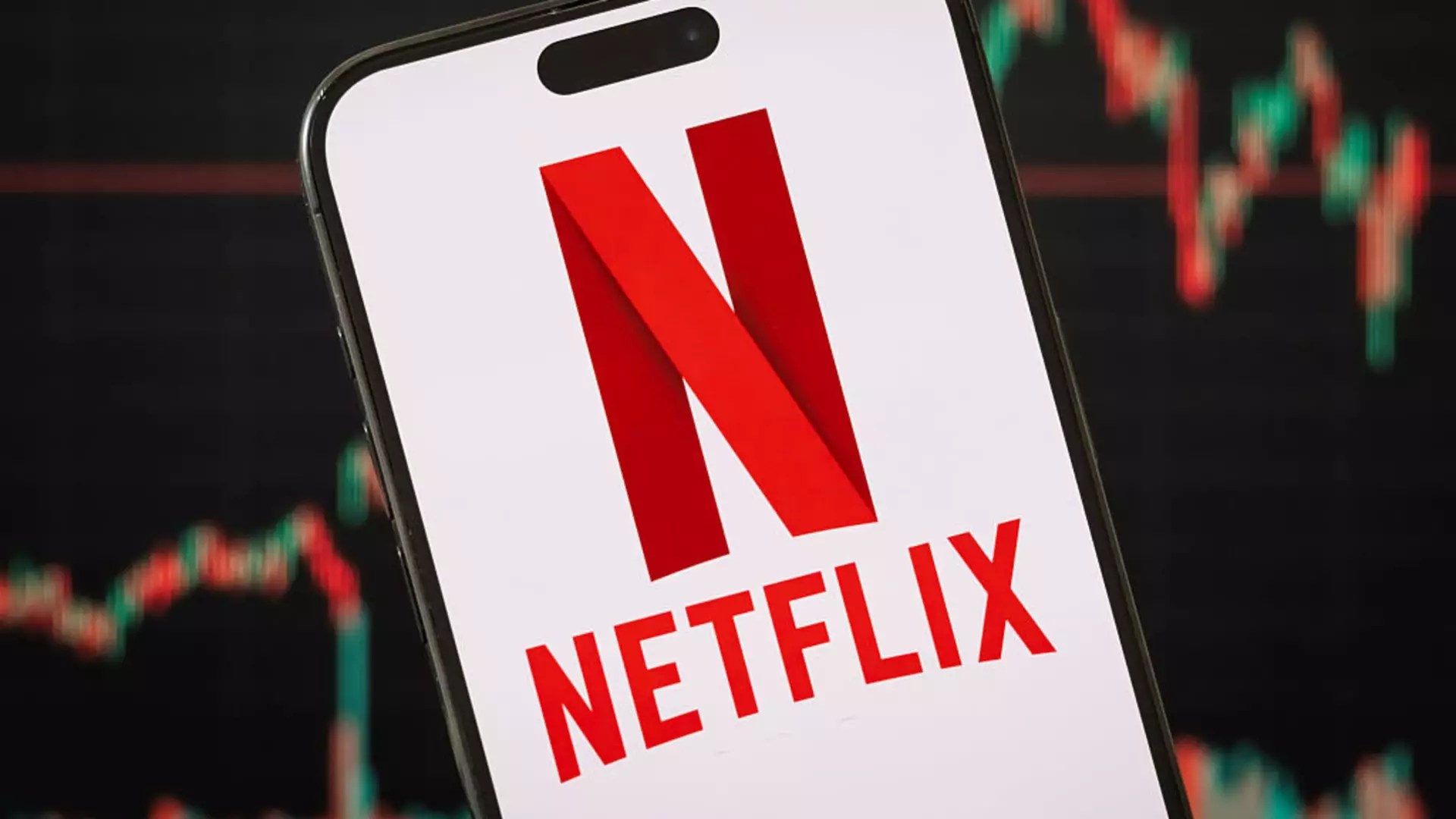In an awe-inspiring turn of events, Netflix is basking in the glow of its most impressive stock rally to date, with an astonishing eleven consecutive days of positive trading. This trend marks a record-breaking achievement for the streaming behemoth, surpassing the previous high of nine days set back in early 2019. As Netflix’s stock ascends into uncharted territory, trading at levels unseen since its public debut in May 2002, the implications for investors and the broader media landscape are both profound and revealing.
The streaming service’s remarkable trajectory seems intertwined with its recent earnings report, which unveiled a robust 13% revenue growth during the first quarter of 2025. Fueled by subscription fees and advertising revenue that exceeded market forecasts, Netflix has successfully attracted and retained a loyal user base, thereby solidifying its status. The narrative surrounding its growth highlights a critical observation: Netflix is thriving while traditional media platforms face turbulent storms, especially amidst the backdrop of President Donald Trump’s controversial trade policies.
Resilience Amid Economic Uncertainty
While many traditional media outlets and entertainment companies face significant setbacks—evident in Warner Bros. Discovery’s nearly 10% drop and Disney’s decline of 13%—Netflix continues to stand resilient. The dichotomy between Netflix’s success and the struggles of its competitors raises important questions about the future of media consumption.
As consumer confidence dips amid global uncertainties, Netflix’s co-CEO Greg Peters has emphasized the inherent stability within the entertainment sector: “Entertainment historically has been pretty resilient in tougher economic times.” This resilience shields Netflix from the harsher impacts of external shocks, such as tariffs and market fluctuations. With a subscription model that consumers deem essential even in economic downturns, Netflix seems to have cemented its place in the lives of millions.
Strategic Positioning in a Competitive Landscape
What stands out is Netflix’s strategic positioning, amplified by a well-timed forecast of revenue between $43.5 billion and $44.5 billion for the full year. While the market speaks of uncertainties surrounding spending patterns, Netflix remains a beacon of consistency, relying not just on market presence but also on a clear vision for its future.
Wall Street watchers, such as analysts at JPMorgan, are buoyant about Netflix’s potential growth, asserting that it has established itself as the unrivaled leader in the global streaming game. JPMorgan underscores that advertising upfronts later this month could serve as game-changing catalysts, propelling share prices even higher.
However, the company’s decision to halt the disclosure of subscriber counts raises eyebrows. It seems that while Netflix’s revenue may be climbing, the conversation about its ability to continuously grow its subscriber base is taking a backseat. This pivot may indicate a desire to showcase the strengths of revenue generation without the clutter of subscriber metrics that can be volatile.
The Pricing Dilemma
As Netflix explores new revenue avenues, questions surrounding its pricing strategy invite skepticism. The company’s standard plan is now priced at $17.99, while its ad-supported option sits at $7.99; the premium package commands a hefty $24.99. The relentless hike in subscription prices begs the question of whether loyal customers adhere to the platform purely due to its perceived value or if they will ultimately blink in the face of rising costs.
While Netflix has seemingly retained its allure, vigilance is warranted. With a streaming field replete with competitors vying fervently for viewer attention, will pricing power remain a sustainable strategy? As costs rise, Netflix must not forget the delicate balance of value that keeps its core audience engaged.
The allure of Netflix’s performance is palpable, and the power it wields in the streaming landscape is undeniable. However, the actions taken today will shape its tomorrow. As Netflix aims to dominate both the viewer’s screen and the investor’s portfolio, the intricate dynamics of its operational strategies and market positioning must stay innovative to navigate unforeseen challenges. This winning streak is merely the beginning; the question remains: how far can it go?


Leave a Reply